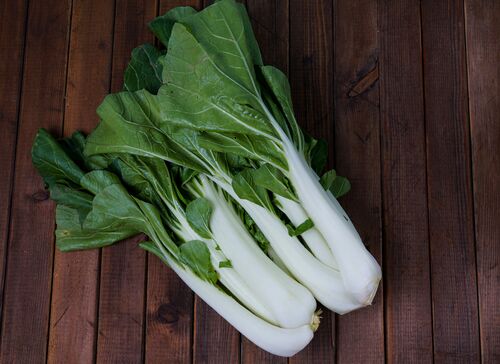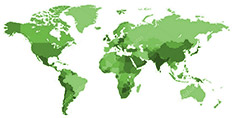Growing and Sowing Pak Choi

Pak choi, also known as bok choy or horse’s ear, is native to Asia. It is a fast-growing leafy vegetable and is member of the cabbage family. This vegetable is very easy to grow. They form loose heads with stems and leaves, both of which are edible. Pak choi has a mild flavour and can be prepared in many different ways. It is a very healthy vegetable.
Growing your own pak choi from seeds
Pak choi belongs to the cruciferous family and is a leafy cabbage, meaning it forms a loose head, with white stems and green leaves. There are several varieties of pak choi, such as Tatsoi and Taisai. It is a fast-growing leafy plant, six weeks after sowing it can often be harvested. However, pak choi is susceptible to bolting (flowering prematurely), especially during the months when the days are longer. To avoid this, sow pak choi either very early, before June, or later, after the longest day.
Sowing and planting pak choi
Pak choi is a cool weather plant, which means it will flower quickly when the days are warmer and longer. It is therefore best to sow after the longest day, from mid-July to the end of September. For an early harvest you can pre-sow from February, for example in a cold greenhouse, after which the plants can be planted out from March and harvested around May. Sow in separate pots, as pak choi does not like transplanting. In this way the roots remain most intact.
As pak choi grows quickly, sow at different times to spread the harvest a little.
Direct to the Pak Choi Seeds >
Position and soil for growing Pak Choi
Give pak choi a sunny to semi-shady spot in your garden or allotment. Like other types of cabbage, it needs relatively high nutrition. In addition, it does not like soil that is too acidic. Enrich the soil before sowing with for example compost and sprinkle garden lime in case of acid soil. Preferably do not sow in places where cabbage has been planted before.
How to care of your pak choi plants
Pak choi does not like dry conditions, so water regularly, especially in hot weather. Make sure the soil is always moist to prevent bolting. Protect the plants against pigeons and cabbage flies, for instance by placing a net over the plants. Fertilise if necessary.
When and how to harvest pak choi?
This depends on when the seeds were sown (see sowing and growing). The cabbage can be harvested when it reaches the desired size. This is usually about 6 weeks after sowing. Harvesting can be done by cutting the plant just above the ground, or, to extend its shelf life slightly, carefully pulling it out of the ground with its roots. If the pak choi has bolted it is still edible, but harvest it as soon as possible.
How to preserve pak choi
Pak choi can be stored in the refrigerator for a few days and can also be frozen, but clean and blanch first.
Is pak choi healthy?
Pak choi is very healthy and contains lots of vitamins A, C and K, is rich in fibre and contains many minerals, such as calcium, iron, manganese, phosphorus, potassium and magnesium.
Pak choi seeds in our collection
In our range, we have several varieties of pak choi, including an organic variety, tatsoi and taisai.
Tips to grow pak choi
- Cover the young plants with nets to prevent pigeons from eating them.
- Do not sow all seeds at once, but at intervals. This way, you can eat fresh from the garden for longer periods.



